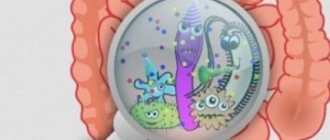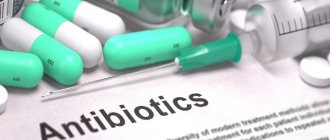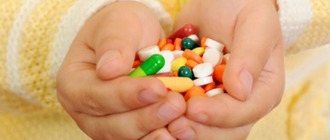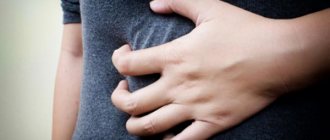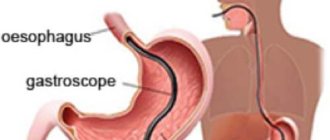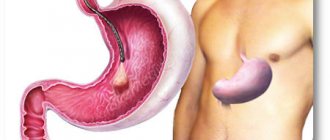Medical therapy
Special studies will help to recognize dysbiosis, which include:
- stool culture;
- breath test;
- coprogram;
- bacteriological examination of aspiration of intestinal contents, as well as biopsy material.
Treatment of this pathology is carried out comprehensively. Several main directions are used for this. The purpose of treatment: to normalize the immune system and gastrointestinal tract activity, restore the intestinal or vaginal microflora.
Currently, there are many drugs designed to restore microflora. These include:
Prebiotics
These products are not digested in the intestines, as they form the basis for the development and growth of beneficial microflora. Prebiotics include: inulin, galactose, fructose isomers, lactulose, oligosaccharides. These components are found in corn, wheat, garlic, chicory, onions, and dairy products. As for medications, the most effective are: Prebio, Duphalac, Lactusan, Normaza.
Probiotics
Such medical preparations contain live bacterial cultures. They do not colonize the intestines to restore beneficial microflora. The main task of probiotics is to suppress the active proliferation of harmful bacteria. Thus, the drugs participate in restoring intestinal balance. The duration of the treatment course is 30–40 days. Drugs that provide good results: Colibacterin, Lactobacterin, Bifidumbacterin.
Agents that suppress the development of pathogenic microflora
These medications contain special bacteria that can neutralize the activity of harmful microorganisms. These include: Enterol, Bactisubtil, Bactisporin. Duration of therapy is 1.5 months.
Symbiotics
The preparations contain a complex of important beneficial bacterial microorganisms. The most famous symbiotics: Bifikol, Linex, and Bifiform. Duration of treatment – 2 weeks.
Synbiotics
Medicines in this group consist of important prebiotics and beneficial bacteria that are necessary for the development of proper microflora. Effective agents: Bifido-bak, Maltodophilus, Laminolact. The treatment course is 21 days.
Combined products
Such drugs consist of important immunomodulators, bacteria. Acipol and Bifiliz are considered the most effective. The duration of treatment is two weeks.
Antiseptics
In case of complications of the disease, special medications will be needed that can suppress the development and reproduction of harmful microorganisms. The use of Ersefuril, Enterofuril for a week at a dose of 200 mg 4 times a day is indicated. Intetrix is taken for 5 days, 2 capsules in 3 doses per day.
In most cases, dysbiosis provokes hypovitaminosis, so it is recommended to take Decamevit, Multitabs and other vitamin complexes.
In addition to taking medications, a special diet will be required to restore the microflora. The diet should contain cereals, bran, fermented milk products, fresh fruits and vegetables, and berries. Try to minimize the consumption of sweets, baked goods, strong coffee and tea, spices, fatty and spicy foods, soda and alcohol.
Treatment with antibiotics helps eliminate beneficial microflora. To avoid the development of dysbiosis, you must immediately start taking medications that can protect beneficial microorganisms. In order for antibiotic treatment to be successful and proceed without complications, it is necessary to strictly adhere to the recommendations of the attending physician.
The mucous membranes of the gastrointestinal tract are colonized by many microorganisms, which are divided into beneficial and opportunistic. The scientific community classifies them into indigenous and facultative microflora. Without indigenous microflora, the human body is unable to function normally
It is an important component of the immune system
Normally, beneficial microorganisms are suppressed by lactose-negative enterobacteria - staphylococci, citrobacter, klebsiella, enterobacter, etc. If the precarious balance is disturbed, then dysbiosis develops.
Dysbacteriosis, or dysbiosis, is a state of microbial imbalance. Lack of balance often occurs due to therapy with antibacterial drugs. This group of drugs inhibits the enzymatic activity of the gastrointestinal flora and reduces the number of indigenous microorganisms, which leads to an imbalance of varying severity between beneficial and opportunistic microflora.
Features of microflora and its functions
Vaginal dysbiosis: symptoms and treatment
Microflora is a special collection of microorganisms that take an active part in the life of the human body. The totality of these microorganisms amounts to half a thousand important bacteria weighing up to 4 kilograms. About 2/3 of the beneficial microflora is located on the inner surface of the intestinal walls, the remaining part covers the genitourinary system and skin.
Microflora performs the following important functions in the human body:
- produces hormones and vitamins;
- regulates gas formation in the intestines;
- ensures the absorption of calcium, iron, vitamins;
- stimulates the immune system to fight pathogenic viruses and bacteria;
- cleanses the human body and intestines of toxic substances;
- performs regulation and control of water and electrolyte balance.
However, when exposed to antibiotics, a serious problem in the functioning of the microflora, namely dysbacteriosis, can occur.
Antibiotics kill harmful bacteria that provoke inflammatory processes and intoxication, namely:
- pneumococci;
- gonococci;
- streptococci;
- staphylococci and others.
It is impossible to cure such infections without the use of antibiotics. An important disadvantage of this treatment is that antibiotics do not act selectively, so they kill not only harmful, but also beneficial microorganisms that live in the human body. Dysbacteriosis requires a fairly long treatment course, which is 25-35 days. To determine the presence of this pathology, you need to know what signs it manifests itself.
Causes
Intestinal dysbiosis after antibiotics is not considered an independent disease by doctors. Doctors perceive microflora disturbance as a concomitant phenomenon during antibacterial therapy.
Causes of the disease:
- Disturbance of intestinal microflora.
- Death of beneficial microorganisms.
Signs of dysbiosis after taking antibiotics can also occur against the background of:
- Incorrect use of medications (violation of the regime).
- Self-prescribing medications.
- Exceeding the dosage.
Attention! Symptoms and treatment of the disease largely depend on the cause of its occurrence. If you do not follow the recommendations of a specialist, then digestive problems will not take long to occur.
The antibacterial drugs taken cannot act selectively; they affect all microorganisms. This leads to the death of beneficial microflora. As a result, digestive problems arise. To the extent that 2/3 of the beneficial microorganisms live in the human stomach, typical symptoms of dysbiosis occur.
Against the backdrop of a long course of the disease, problems with the immune system, weakness, and impaired liver and kidney function may appear.
Treatment of dysbiosis after antibiotics
Diarrhea from antibiotics - what to do
Dysbacteriosis after antibiotics is usually treated with special preparations that contain beneficial bacteria.
Prebiotics and probiotics are commonly used.
Prebiotics enter the body with food and are not digested in the intestines, but such substances are an excellent nutrient medium for microflora. These kinds of substances are found in large quantities in onions, garlic, corn, and dairy products. There are also special preparations containing prebiotics (normze, prebio, etc.).
Probiotics contain live bacteria that do not colonize the intestines, but rather inhibit the growth of pathogenic microorganisms and restore the natural balance in the intestines. However, in severe cases of dysbiosis, such drugs are ineffective and the use of antimicrobial drugs is required.
How to treat dysbiosis after antibiotics?
Dysbacteriosis after antibiotics can be treated with intestinal antiseptics, which suppress the growth of pathogenic bacteria, practically without affecting the bacteria important for the intestine.
Intetrix is a derivative of three quinolones and is prescribed for a course of no more than 5 days.
Nifuroxzide is part of the nitrofuran group and is usually prescribed as a weekly course of 200 mg four times a day.
Drugs for dysbiosis after antibiotics
Dysbacteriosis after antibiotics, especially in severe form, is subject to drug treatment. Antibacterial drugs to restore intestinal microflora are prescribed only after the nature of dysbiosis has been established, and also only after testing the sensitivity of microorganisms.
- For staphylococci and enterococci, drugs from the group of macrolides (oleandomycin) and semisynthetic penicillins (amoxicillin) are prescribed.
- For E. coli, nalidixic acid derivatives, nitrofurans (antiseptics), and sulfonamides (phthalazole) are more effective.
- For Pseudomonas aeruginosa, polymyxin, aminoglycosides (kanamycin).
- For candidomycosis - lamisil, amphotericin.
- For dysbacteriosis, bacteriophages are also used - viruses that act against only one type of bacteria. Such drugs can be used in conjunction with antibiotics or as an alternative treatment. Bacteriophages are taken orally or used as an enema. The modern pharmaceutical market offers coliproteus, staphylococcal, pseudomonas, and proteus bacteriophages.
Dysbacteriosis leads to hypovitaminosis, for the treatment of which vitamin complexes (multitabs) are prescribed. Also, with dysbacteriosis, immune defense is impaired, so immunomodulators are used in treatment, which not only help improve immunity, but also quickly restore the intestinal microflora. Typically, herbal remedies (Echinacea tincture, propolis) are used for this purpose.
, , , ,
Diet therapy for dysbiosis
Correcting the diet can significantly alleviate the condition of dysbiosis after taking antibiotics. At the first signs of digestive disorders, it is worth limiting as much as possible the intake of rough foods rich in fiber, as well as foods high in carbohydrates.
It is advisable not to eat foods that can irritate the intestinal wall: fatty, hot, salty, spicy foods; heavy foods - mushrooms, pearl barley and barley, drinks that can affect peristalsis - coffee, alcohol, carbonated drinks.
With an integrated approach to treatment, dysbiosis after antibiotics can be cured even in the most advanced cases. The earlier treatment is started, the less time and cost it will require.
Medical therapy
What you can’t and can’t eat after appendicitis, constipation after appendicitis surgery, diets
Special studies will help to recognize dysbiosis, which include:
- stool culture;
- breath test;
- coprogram;
- bacteriological examination of aspiration of intestinal contents, as well as biopsy material.
Treatment of this pathology is carried out comprehensively. Several main directions are used for this. The purpose of treatment: to normalize the immune system and gastrointestinal tract activity, restore the intestinal or vaginal microflora.
Currently, there are many drugs for dysbiosis designed to restore microflora. These include:
Prebiotics
These products are not digested in the intestines, as they form the basis for the development and growth of beneficial microflora. Prebiotics include: inulin, galactose, fructose isomers, lactulose, oligosaccharides. These components are found in corn, wheat, garlic, chicory, onions, and dairy products. As for medications, the most effective are: Prebio, Duphalac, Lactusan, Normaza.
Probiotics
Such medical preparations contain live bacterial cultures. They do not colonize the intestines to restore beneficial microflora. The main task of probiotics is to suppress the active proliferation of harmful bacteria. Thus, the drugs participate in restoring intestinal balance. The duration of the treatment course is 30–40 days. Drugs that provide good results: Colibacterin, Lactobacterin, Bifidumbacterin.
Agents that suppress the development of pathogenic microflora
These medications contain special bacteria that can neutralize the activity of harmful microorganisms. These include: Enterol, Bactisubtil, Bactisporin. Duration of therapy is 1.5 months.
Symbiotics
The preparations contain a complex of important beneficial bacterial microorganisms. The most famous symbiotics: Bifikol, Linex, and Bifiform. Duration of treatment – 2 weeks.
Synbiotics
Medicines in this group consist of important prebiotics and beneficial bacteria that are necessary for the development of proper microflora. Effective agents: Bifido-bak, Maltodophilus, Laminolact. The treatment course is 21 days.
Combined products
Such drugs consist of important immunomodulators, bacteria. Acipol and Bifiliz are considered the most effective. The duration of treatment is two weeks.
Antiseptics
In case of complications of the disease, special medications will be needed that can suppress the development and reproduction of harmful microorganisms. The use of Ersefuril, Enterofuril for a week at a dose of 200 mg 4 times a day is indicated. Intetrix is taken for 5 days, 2 capsules in 3 doses per day.
Vitamins
In most cases, dysbiosis provokes hypovitaminosis, so it is recommended to take Decamevit, Multitabs and other vitamin complexes.
In addition to taking medications, a special diet will be required to restore the microflora. The diet should contain cereals, bran, fermented milk products, fresh fruits and vegetables, and berries. Try to minimize the consumption of sweets, baked goods, strong coffee and tea, spices, fatty and spicy foods, soda and alcohol.
Treatment with antibiotics helps eliminate beneficial microflora. To avoid the development of dysbiosis, you must immediately start taking medications that can protect beneficial microorganisms. In order for antibiotic treatment to be successful and proceed without complications, it is necessary to strictly adhere to the recommendations of the attending physician.
Dysbacteriosis is characterized by an imbalance in the microbial balance in the intestines. Various factors can cause the symptom complex. In most cases, dysbiosis develops from antibiotics. How does the disease manifest itself and is it possible to avoid its occurrence with antimicrobial therapy?
Diagnostics
The presence of dysbiosis caused by taking antibacterial drugs can be determined by characteristic clinical signs. Specific methods for diagnosing this pathological condition include bacterial culture of stool and laboratory analysis for dysbacteriosis. In order to determine dysbiosis of the small intestine, an examination of an aspirate or scraping from the jejunum is performed. Indirect signs of microflora imbalance are determined by performing gas-liquid analysis and biochemical examination of feces.
Causes and symptoms of intestinal dysbiosis
The disease is a qualitative and quantitative change in microflora with a predominance of pathogenic and opportunistic microorganisms. At the same time, the level of lacto- and bifidobacteria is significantly reduced.
Etiological and provoking factors
The violation is always secondary, that is, it develops under the influence of certain factors. Most often, dysbiosis occurs due to antibiotics, since these drugs have a detrimental effect on the normal flora.
But there are other factors for this deviation:
- hormonal drugs and cytostatics;
- exposure to radiation;
- operations on the intestines and abdominal organs;
- unbalanced diet, sudden change in usual diet;
- infectious diseases with intestinal damage;
- diseases of the digestive tract (gastritis, pancreatitis);
- metabolic disorders;
- pathologies of internal secretion organs;
- motor problems;
- acclimatization.
Symptoms in adults
Intestinal dysbiosis after antibiotics at the initial stage has mild symptoms. In the late period, characteristic clinical signs appear:
- Defecation disorder. Malabsorption of fluid results in diarrhea. As the condition worsens, the stool becomes not only liquid, but also foul-smelling. It contains mucus and blood streaks.
- In older people, imbalance of flora leads to chronic constipation.
- When food enters the intestines, gases accumulate in it. This is accompanied by bloating and abdominal pain and rumbling. After passing stool and gas, the pain temporarily decreases.
- The localization of pain in case of damage to the small intestine is observed near the navel, and in case of damage to the large intestine it predominates below, on the right side.
- Impaired digestion manifests itself in the form of dyspepsia. The patient complains of nausea, belching, and vomiting. He has no appetite.
- Often the skin itches and becomes covered with pinpoint rashes; a reaction occurs even to foods that previously did not give allergy symptoms.
- With an advanced form of dysbacteriosis, intoxication is observed, since the complete elimination of metabolic products is not carried out. There is an increase in temperature, pain in the head, muscle aches, weakness and drowsiness.
- A lack of vitamins and other useful substances when their absorption from food is impaired is manifested by dryness, cracks in the corners of the mouth, pallor, brittle nails and hair.
Symptoms in children
Signs of dysbiosis in older children are no different from symptoms in adults. Dysbacteriosis in infants after antibiotics or under the influence of other unfavorable factors is especially dangerous.
It is accompanied by:
- regurgitation;
- flatulence;
- rumbling in the stomach;
- spastic colic;
- pasty stools with foam and mucus, white or greenish in color;
- Sometimes the stool takes on an acidic or putrid odor.
A child with dysbacteriosis is developmentally delayed due to impaired absorption of nutrients. He is often capricious and does not latch well.
As the pathology progresses, malabsorption syndrome develops, accompanied by:
- diarrhea;
- steatorrhea;
- malnutrition;
- hypovitaminosis.
Chronic intoxication of an endogenous nature leads to anemia, developmental delay, asthenoneurosis, severe allergies in the form of urticaria or atopic dermatitis.
Quite often, a temperature is observed with dysbacteriosis in children after antibiotics, which parents mistakenly mistake for a complication of an infectious disease.
Causes of dysbiosis when taking antibiotics
The sensitivity of microflora to antibiotics is not selective. Even modern drugs with antibacterial activity are not able to act only on individual pathogenic microorganisms. Medicinal drugs that are used to treat infectious diseases destroy not only pathogens, but also positive intestinal microflora. The result of this process is dysbiosis. In order to avoid the negative consequences of antibiotic therapy, it is necessary to use additional methods to maintain the balance of normal intestinal microbiota.
Intestinal microflora: restoration
Preparations containing live bacteria and a medium for their reproduction are the most common means of treating this disease. But they should be prescribed by a doctor, since complex therapy gives a greater effect. There are preparations in the form of tablets or capsules, syrup or powder for preparing a suspension. But it is believed that when passing through the stomach, some of the microorganisms die, so it would be more effective to use such products in the form of microenemas or suppositories.
You can use folk remedies to restore microflora. For example, a mixture of dried apricots and prunes with honey, decoctions or extracts of St. John's wort, calendula, yarrow, eucalyptus or plantain. It is useful to eat lingonberries, garlic and grated sour apples.
A mandatory stage of treatment should be a nutritious diet, excluding fatty, spicy and canned foods, fast food and soda. It is very beneficial for the intestinal microflora to consume fermented milk products. Moreover, they must be natural, and you need to drink them at least half a liter a day.
In some cases, antibacterial drugs can be used to destroy highly multiplied pathogenic microflora: Penicillin, Tetracycline, Cephalosporin or Metronidazole. But probiotics must be taken together with them.
Probiotics
Probiotics are drugs for the effective treatment of intestinal dysbiosis; they contain microorganisms that have a positive effect on the intestinal microflora. In order for the microorganism to pass through the upper parts of the digestive tract with minimal losses, it is placed in an acid-sensitive capsule.
All probiotics can be divided into several groups:
- Monocomponent. They consist of one type of bacteria - bifidobacteria, lactobacilli, colibacteria - Bifidumbacterin, Lactobacterin, Colibacterin.
- Multicomponent. They contain several types of bacteria, colibacteria, bifidumbacteria, lactobacilli - these are Linex, Bifiform, Bifikol.
- Combined. They contain symbiotic communities of major bacteria and strains that are resistant to most antibiotics in combination with a nutrient medium and immunoglobulin complexes. Linex, Rioflora immuno, Bificol.
- Synbiotics. These medicines are produced with a competent combination of pre- and probiotics, forming ready-made complex medicines, for example, Bifidobac, Maltodophilus, Laminolact.
- Antagonists. Probiotics can conditionally be classified as antagonists; these are microorganisms that can also suppress the development of opportunistic flora; these include antidiarrheal drugs such as Enterol, Bactisporin, Baktisubtil.
It is worth understanding that in severe forms of dysbacteriosis, the use of probiotics and prebiotics alone is not enough; additional use of antibacterial agents and intestinal antiseptics is also necessary.
Therapeutic treatment of the disease
How to treat intestinal dysbiosis? There are several methods to help cope with the disease. Most often, therapy includes:
- taking various medications;
- treatment in adults also involves following a diet;
- giving up alcohol and smoking.
The question of how to treat a disorder of the intestinal microflora arises when the first signs of the disease appear. It is advisable that the medications be prescribed by a doctor, otherwise problems may arise.
What medications can be taken for dysbiosis after antibiotics:
- Probiotics and prebiotics.
- Vitamins.
- Drugs that inhibit the growth of pathogenic microorganisms in the intestines.
- Symbiotics.
- Combination medications.
- Synbiotics.
- Antiseptics
- Bacteriophages.
- Immunomodulators.
- Antibiotics.
Treatment methods
To cure intestinal dysbiosis after antibiotics, you need to consult a specialist. If you experience discomfort in the lower digestive tract, you should visit a therapist or gastroenterologist. If digestive problems occur in children, treatment will be prescribed by a pediatrician.
You should not self-medicate. Therapy for intestinal dysbiosis begins with diagnosis. The doctor can learn basic information about the state of the microflora from a number of bacteriological tests:
- coprograms;
- stool culture;
- endoscopic examination of the jejunum;
- hydrogen breathing test (express method);
- paper chromatography;
- ion chromatography;
- microscopy of a native smear.
We recommend reading
- How to cure dysbiosis after antibiotic treatment
- Causes of dysbiosis after antibiotics
- How to treat intestinal dysbiosis in adults
Treatment of dysbiosis at home without diagnostic tests is not a recommended action. To get rid of unpleasant symptoms and restore the microbial balance of the small and large intestines, you need to know:
- Which types of microorganisms predominate and which ones are in quantitative shortage.
- Establish sensitivity to antibacterial drugs and bacteriophages.
- Determine the need to use a type of probiotic - a preparation containing live beneficial microorganisms.
After conducting diagnostic studies, the doctor prescribes the necessary medications. The list of primary medications for the treatment of dysbiosis includes:
- probiotics are medications, dietary supplements (dietary supplements), which include lactobacilli or bifidobacteria. There are combination drugs containing both types of microorganisms (Acipol, Bifidumbacterin, Normobakt, Linex, Bifiform Bactistatin);
- prebiotics are preparations that contain natural fibers, food components that are not digested in the stomach. Fiber, pectin, lactulose, inulin, cellulose enter the lower gastrointestinal tract and serve as food for microorganisms. This contributes to their development and quantitative growth (Lactusan, Normaza, Prebio, Duphalac, Bactistatin (an effective dietary supplement that has no analogue);.
- symbiotics - combined products containing the necessary strains of beneficial bacteria, a prebiotic (Maxilak, Lactofiltrum, Bifidumbacterin forte);
- vitamin complex – preparations that contain several vitamins to support the immune system and increase the body’s protective functions.
In addition to the medicinal method of treating intestinal dysbiosis, a therapeutic diet will help eliminate the manifestations of the symptom complex, the observance of which is mandatory when the microbial balance is disturbed.
The diet includes exclusion from the diet:
- fried, fatty, spicy, salty foods;
- alcoholic drinks;
- smoked meats, sausages;
- pickled vegetables;
- fatty varieties of fish, meat;
- a large amount of garlic, raw onions;
- flour, pasta;
- too cold, hot dishes.
To activate the growth process of beneficial bacteria, it is necessary to consume fiber contained in vegetables, fruits, cereals, legumes, and bran. It is necessary to drink fermented milk products (kefir, yogurt, yogurt, fermented baked milk).
Dysbiosis after taking antibiotics can develop in the internal genital organs of women; the treatment of vaginal dysbiosis differs from the treatment of intestinal microflora disorders.
Vaginal dysbiosis can develop in adult women or in newborn girls, school-age children, and adolescents. The cause of the disease can be a disturbance in the microbial balance of the intestines, and candidiasis (thrush) can be a consequence of vaginal dysbiosis. Signs of pathology are:
- Copious vaginal discharge with a characteristic odor.
- Itching.
- Burning.
- Inflammation of the external genitalia.
- Pain in the lower abdomen.
It is necessary to treat vaginal dysbiosis by resorting to complex therapy, which includes:
- taking tablet forms of medications;
- use of vaginal suppositories;
- introduction of tampons with medicinal solutions to restore the acidic environment;
- local application of creams and ointments to eliminate anaerobic bacteria;
- use of antihistamines;
- immunotherapy with vitamin complexes.
To speed up relief from unpleasant symptoms of vaginal dysbiosis, following a diet is important.
Loading …
Principles of pathology treatment
The development of dysbacteriosis is quite dangerous for the body: the risk of infection increases, the functioning of the gastrointestinal system and metabolic processes are disrupted, and intoxication of the body may begin. Taking this into account, it is necessary to treat dysbiosis after antibiotics without waiting for complications. Treatment of this phenomenon is carried out comprehensively using drug therapy, vitamin therapy, and diet. It solves the following main tasks: restoration of beneficial microflora and destruction of pathogenic microflora; normalization of intestinal functions; increasing immune defense.
For the successful treatment of dysbiosis, first of all, diet is provided. It is necessary to exclude baked goods and baked goods, fatty meats, hot spices and seasonings from the diet. You should not drink carbonated drinks, strong tea and coffee. The following foods can be considered useful: fresh fruits and vegetables; cereal dishes (oats, wheat, rice); bran; fermented milk products (cottage cheese, yogurt, it is recommended to drink kefir).
How to treat dysbiosis after antibiotics
Treatment of intestinal dysbiosis in adults involves the use of various groups of drugs. Each of them performs a specific function, and together they allow you to restore the balance of microflora and the function of the digestive organs.
Prebiotics
They are represented by such products as “Hilak-Forte”, “Dufalak” and others. They are used to stimulate the growth and reproduction of a person’s own intestinal microflora, that is, they have a bifidogenic effect.
Probiotics (eubiotics)
These drugs introduce beneficial bacteria into the body, since they contain them in their composition. They are used to treat dysbiosis in adults after antibiotics in cases of stage 2 or 3 disease, when the own microflora is almost completely suppressed by pathogens.
These drugs are represented by drugs of several generations:
- The first generation is represented by a monocomponent composition. Such a drug includes only one strain of microorganisms that are present in a concentrated form in the liquid. Their main feature is considered to be a short shelf life and instability when exposed to the acidic environment of the stomach.
- The second generation includes drugs that contain fungal and bacterial spores that help suppress the growth and development of pathogenic intestinal flora. They are also called antagonists.
- The third generation is the so-called symbiotics. They include several types of bacteria.
- The fourth generation (synbiotics) contain only one type of beneficial microorganisms and a nutrient medium for their seeding and reproduction.
- The newest, 5th generation includes several varieties of bacteria and a nutrient medium.
Enzymes
These tablets for dysbiosis after antibiotics are often used. They are intended to normalize the process of digestion and absorption of substances from food, since both of these processes are disrupted in this disease.
Sorbents
Sorbents are also a group that is prescribed by a doctor for complex therapy. They are indicated for the following symptoms:
- bloating;
- dyspepsia;
- allergic manifestations.
The porous formula of these drugs allows you to remove toxic substances, gases and pathogenic microorganisms from the intestinal cavity and remove them with feces.
Other drugs
Prokinetics. To normalize motor function, these means are used, which move the food bolus in a natural direction.
Immunomodulators. For dysbacteriosis, intestinal infections and diarrhea, it is often necessary to use medications to increase the body's defenses.
Where does microflora come from?
Microflora research was first undertaken by Mechnikov and Nissle at the beginning of the 20th century. Then the area of research was abandoned for a long time due to the political situation on the planet. Colonization of the intestines by bacteria begins in the prenatal period. It is curious that the birth canal of a pregnant woman becomes overgrown with strains characteristic of the intestines. During childbirth, the child gains the necessary flora. Similar processes occur in the nipples of nursing breasts.
Research data is confirmed by information that children born by cesarean section have problems in the development of microflora. Young mothers are advised to start breastfeeding their babies as soon as possible. Mother's milk also has other beneficial qualities: it contains a number of substrates used by bacteria to feed the biocenosis. It turns out that breastfeeding encourages the growth of beneficial flora. Breast milk contains:
- Immunoglobulins.
- Lymphocytes.
- Macrophages.
Microflora of human mucosa
These chemicals are characteristic of the normal intestinal environment. Proper nutrition among the adult population is encouraged. Simple food is rich in fiber, necessary for the growth of the biocenosis. It is recommended to include in the diet:
- Onion.
- Garlic.
- Cereals.
- Artichoke.
- Chicory.
- Milk and so on.

